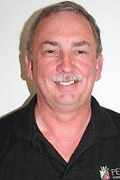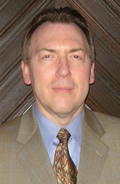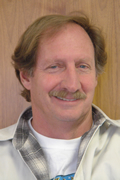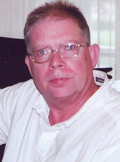Regulation Classes
NOTE: Click on an instructor's name to see a bio.
What Difference Does It Make?
Steve Brady, RPT
Steve Brady, RPT
 Steve
Brady, RPT served as head piano technician at the University of
Washington from 1978 till 2003. During those 25 years he tuned and prepared
pianos for approximately 5,000 concerts and recitals, and worked with most
of the leading pianists of our time. Steve served as editor of the Piano
Technicians Journal for six years (1995 to 2001). In 1996 he received
the Piano Technicians Guild’s “Member of Note” award, and in 1999 PTG published
his book, A Piano Technician’s Guide to Field Repairs, which recently
went into a second edition. His latest book, Under the Lid: The Art and
Craft of the Concert Piano Technician, was published in 2008. Steve
currently serves as head piano technician for the Aspen Music Festival and
School. In his spare time Steve enjoys cooking, tending his wine cellar,
and dancing Argentine tango. He lives in Seattle with his wife, the concert
pianist Judith Cohen. www.stevebradypiano.com
Steve
Brady, RPT served as head piano technician at the University of
Washington from 1978 till 2003. During those 25 years he tuned and prepared
pianos for approximately 5,000 concerts and recitals, and worked with most
of the leading pianists of our time. Steve served as editor of the Piano
Technicians Journal for six years (1995 to 2001). In 1996 he received
the Piano Technicians Guild’s “Member of Note” award, and in 1999 PTG published
his book, A Piano Technician’s Guide to Field Repairs, which recently
went into a second edition. His latest book, Under the Lid: The Art and
Craft of the Concert Piano Technician, was published in 2008. Steve
currently serves as head piano technician for the Aspen Music Festival and
School. In his spare time Steve enjoys cooking, tending his wine cellar,
and dancing Argentine tango. He lives in Seattle with his wife, the concert
pianist Judith Cohen. www.stevebradypiano.com
How will a pianist respond to a change in each aspect of grand action
regulation? This class examines how the pianist feels it when we take
each parameter too far in one direction and then too far in the other.
If a live pianist is available, I like to have one play the piano before
and after some of the changes to get their feedback.
Vertical Regulation of the Grand Action
Chris Brown, RPT
Chris Brown, RPT
 Christopher
Brown, RPT has worked as a rebuilder and service technician for 32 years. In
2005, Chris set up his shop exclusively for action work. He is a founding member
of The Piano Rebuilders, a consortium of Boston area specialists offering jigs,
fixtures, and rebuilding services to the trade. www.thepianorebuilders.com
Christopher
Brown, RPT has worked as a rebuilder and service technician for 32 years. In
2005, Chris set up his shop exclusively for action work. He is a founding member
of The Piano Rebuilders, a consortium of Boston area specialists offering jigs,
fixtures, and rebuilding services to the trade. www.thepianorebuilders.com
“Things that stand or move vertically are in their greatest strength
and stability when perfectly opposing gravity. Any deviation erodes that
strength and stability. An ideal scenario in a grand piano would be a
flat horizontal keybed, with a perfectly bedded keyframe, and a topstack
with parts all in correct alignment while vertical in their travel and
positioning, particularly at strike. Add to this strings leveled parallel
to the keybed along the strike line and a perfect hammer-to-string fitting
for each hammer, with no over-lifted strings. Chris’s Regulation Station
tools to help demonstrate, calibrate, and mitigate the approximations
found in a real-world grand action.
Express Regulation and Voicing (Part 1 of 2 classes)
Paul Rea
Paul Rea
 Paul
says that with 35 plus years in the music industry “There is nothing I can’t
do to a piano, and if there is… I know someone who can.” He also traveled the
country servicing player pianos and standard pianos. Paul is a certified Piano
Disc and QRS player system installer/technician, and quite proficient at touch
up and repair of polyester and conventional finishes. Paul has “sat in every
seat in the house” from bookkeeping, salesman, store manager, technician, factory,
as well as owning a retail store with his parents. Paul also owned a successful
tuning, rebuilding, refinishing and piano moving company for many years. The
past few years Paul has been with a major Southern California piano dealership
as a service manager and technician before accepting the National Technical
Service Managers position at the Pearl River Piano Group. In 2007 Paul accepted
the position at Petrof USA bringing his technical knowledge and experience
to Petrof USA as their National Service Manager. www.petrofpianosusa.com
Paul
says that with 35 plus years in the music industry “There is nothing I can’t
do to a piano, and if there is… I know someone who can.” He also traveled the
country servicing player pianos and standard pianos. Paul is a certified Piano
Disc and QRS player system installer/technician, and quite proficient at touch
up and repair of polyester and conventional finishes. Paul has “sat in every
seat in the house” from bookkeeping, salesman, store manager, technician, factory,
as well as owning a retail store with his parents. Paul also owned a successful
tuning, rebuilding, refinishing and piano moving company for many years. The
past few years Paul has been with a major Southern California piano dealership
as a service manager and technician before accepting the National Technical
Service Managers position at the Pearl River Piano Group. In 2007 Paul accepted
the position at Petrof USA bringing his technical knowledge and experience
to Petrof USA as their National Service Manager. www.petrofpianosusa.com
These are classes you won’t want to miss focusing on regulation and
voicing split in two periods using tools and fixtures some you have seen
some you have not. This will help speed up your regulation and voicing
and make your efforts more accurate at the same time, making you more
money and giving your customer more bang for their buck. (See Voicing section for Part 2.)
Are You Regulationally Challenged?
Rick Baldassin , RPT
and Carl Teel, Renner USA
Rick Baldassin, RPT - Renner USA
 Rick received his education and piano technology training from Brigham Young University. He is the author of the book On
Pitch, which was recently re-published. Rick served as the Tuning Editor for the Journal from 1987 to 1991. His teaching has taken him to piano factories and conventions throughout the United States, Canada, Europe, Russia, Korea and Australia. Rick has served as the Concert Technician for the Utah Symphony for over 20 years, and has been the Teaching and Technical Consultant for Renner since 1989. He has been trained in the concert and artist programs of Fazioli, Steinway and Yamaha, and has been a consultant to the Falcone, Mason & Hamlin, and Pramberger Piano Companies. Rick also serves as the Technical Support Director for Fazioli in North America. He is a Member of Note, Jim Burton, and Hall of Fame award winner. Rick and his wife Cindy currently operate Baldassin Pianos, a full-line rebuilding and retail showroom located in Salt Lake City.
Rick received his education and piano technology training from Brigham Young University. He is the author of the book On
Pitch, which was recently re-published. Rick served as the Tuning Editor for the Journal from 1987 to 1991. His teaching has taken him to piano factories and conventions throughout the United States, Canada, Europe, Russia, Korea and Australia. Rick has served as the Concert Technician for the Utah Symphony for over 20 years, and has been the Teaching and Technical Consultant for Renner since 1989. He has been trained in the concert and artist programs of Fazioli, Steinway and Yamaha, and has been a consultant to the Falcone, Mason & Hamlin, and Pramberger Piano Companies. Rick also serves as the Technical Support Director for Fazioli in North America. He is a Member of Note, Jim Burton, and Hall of Fame award winner. Rick and his wife Cindy currently operate Baldassin Pianos, a full-line rebuilding and retail showroom located in Salt Lake City.
Carl Teel - Renner USA
 Carl
has been repairing and restoring pianos for over 30 years. He has been a member
of PTG since 1976, and since 1979 has served continuously as Treasurer of the
Salt Lake City Chapter. Carl was instrumental in running the Utah Intermountain
Seminar for a number of years. He is a popular instructor at local, regional
and national conventions, and is a consultant to piano technicians throughout
Utah.
Carl
has been repairing and restoring pianos for over 30 years. He has been a member
of PTG since 1976, and since 1979 has served continuously as Treasurer of the
Salt Lake City Chapter. Carl was instrumental in running the Utah Intermountain
Seminar for a number of years. He is a popular instructor at local, regional
and national conventions, and is a consultant to piano technicians throughout
Utah.
When trying to remedy an action that does not function properly, a
timely and accurate diagnosis is crucial. Ten action models will be prepared
to malfunction in a variety of ways. In the first period, class members
in small groups will analyze and propose solutions to these problems.
In the second period, the proper diagnosis for each model will then be
shown, and the model restored to proper function. This format allows
plenty of time to discuss principles of action regulation that relate
to each problem. Class limit 30.
Upright Regulation: The Next Step
Paul Revenko-Jones, RPT
Paul Revenko-Jones, RPT
Paul grew up in the Washington, DC area, went to undergraduate school at Grinnell
College in Iowa (BA, philosophy 1968), and did his graduate work at the University
of Chicago (MA, English 1969). He was a dedicated brass player and played semi-professionally
in the Midwest while gaining an interest in piano technology. After his return
from the Peace Corps in 1971, he opened the first Music
of the Spheres Pianoworks shop in Washington, DC. After joining the Piano
Technicians Guild in 1987, he achieved RPT designation in 1989, and from 1987
served the PTG Chicago Chapter as editor of the newsletter, Secretary, Vice-president,
and President. He tuned for the Lyric Opera briefly in the 1990's, and now,
with his wife Oksana, operates a full piano restoration shop on Chicago's near
west side as well as servicing a substantial private tuning clientele. Paul
has been a regular teacher at regional and national PTG seminars and institutes
since the mid-1990s. He has also been an editor of the Piano Technicians
Journal from 2001-2005. In June, 2005, Paul received the Piano Technician's
Guild Jack Greenfield Award "in recognition of outstanding research and
writing of the best technical article for the Piano Technicians Journal." His
interests include writing, the martial arts (ranked black belt and an instructor
in aikido), and sailing
their 28' sailboat Pianoforte on Lake Michigan.
After upright pre- or gross regulation procedures, how do you find out
what to do next? Is there something in key travel that will tell you?
What is the only sensible diagnostic question to ask? How do you make
changes, and in what direction? How do you balance the elements of regulation
with each other? Find out the answers to these questions and come to
meet the family!
Bob and Bobbling Hammers
Mike Carraher, RPT
Mike Carraher, RPT - Renner USA
 Mike
has been a member of PTG since 1979 and an examiner for the RPT exams since
1981. He also designed the first repair jigs for the technical exam and still
participates in their construction. For over 20 years Mike has taught various
tuning and regulation classes at the local, regional and Institute levels.
He makes shop fixtures and exhibits for Renner USA, and is a technical consultant
for Hailun USA. Mike has owned and operated Carr’s Piano Service in Elizabethtown
PA for over 25 years.
Mike
has been a member of PTG since 1979 and an examiner for the RPT exams since
1981. He also designed the first repair jigs for the technical exam and still
participates in their construction. For over 20 years Mike has taught various
tuning and regulation classes at the local, regional and Institute levels.
He makes shop fixtures and exhibits for Renner USA, and is a technical consultant
for Hailun USA. Mike has owned and operated Carr’s Piano Service in Elizabethtown
PA for over 25 years.
New class! Mike is well known for his vertical regulation classes. This
one has a new twist. If you want to learn, once and for all, about regulating
a vertical action and how to set aftertouch, this class is for you. Find
out who Bob is, and what Bob has to do with Bobbling hammers!
Understanding the Core Principles of Action Regulation
Israel Stein, RPT
Israel Stein, RPT
Israel Stein, RPT, has directed the PTG’s Technical Exam program from 2004
until 2009 and in this capacity also developed and taught the Technical Exam
Hands-on Exam Prep classes at the PTG's Annual Institute during those years.
Israel has administered over 100 technical examinations since he set up the
technical testing program for PTG's Boston Chapter in 1989, and this experience
continuously provides unique and valuable perspectives for teaching action
regulation. A graduate of the North Bennet Street School Piano Technology program
(Boston), Israel has been employed at San Francisco State University as Piano
Technician for the past 6 years – besides operating his own piano service and
rebuilding business. Previously his career in piano service included employment
with the Boston area Steinway dealership - where his responsibilities included
working as primary Boston Area Steinway concert technician - and a stint regulating
and voicing brand new grands at the Mason & Hamlin factory in Haverhill,
Massachusetts.
In a guided group setting, we will explore the workings of the piano
action from within, through a series of exercises and discussions. Working
in pairs on action models students will learn the relationships between
various regulation functions (or steps) and what effect each adjustment
has on how the action functions. You will leave with a real understanding
of the purpose of good regulation and how to achieve it. Two periods.
 Steve
Brady, RPT served as head piano technician at the University of
Washington from 1978 till 2003. During those 25 years he tuned and prepared
pianos for approximately 5,000 concerts and recitals, and worked with most
of the leading pianists of our time. Steve served as editor of the Piano
Technicians Journal for six years (1995 to 2001). In 1996 he received
the Piano Technicians Guild’s “Member of Note” award, and in 1999 PTG published
his book, A Piano Technician’s Guide to Field Repairs, which recently
went into a second edition. His latest book, Under the Lid: The Art and
Craft of the Concert Piano Technician, was published in 2008. Steve
currently serves as head piano technician for the Aspen Music Festival and
School. In his spare time Steve enjoys cooking, tending his wine cellar,
and dancing Argentine tango. He lives in Seattle with his wife, the concert
pianist Judith Cohen.
Steve
Brady, RPT served as head piano technician at the University of
Washington from 1978 till 2003. During those 25 years he tuned and prepared
pianos for approximately 5,000 concerts and recitals, and worked with most
of the leading pianists of our time. Steve served as editor of the Piano
Technicians Journal for six years (1995 to 2001). In 1996 he received
the Piano Technicians Guild’s “Member of Note” award, and in 1999 PTG published
his book, A Piano Technician’s Guide to Field Repairs, which recently
went into a second edition. His latest book, Under the Lid: The Art and
Craft of the Concert Piano Technician, was published in 2008. Steve
currently serves as head piano technician for the Aspen Music Festival and
School. In his spare time Steve enjoys cooking, tending his wine cellar,
and dancing Argentine tango. He lives in Seattle with his wife, the concert
pianist Judith Cohen. Christopher
Brown, RPT has worked as a rebuilder and service technician for 32 years. In
2005, Chris set up his shop exclusively for action work. He is a founding member
of The Piano Rebuilders, a consortium of Boston area specialists offering jigs,
fixtures, and rebuilding services to the trade.
Christopher
Brown, RPT has worked as a rebuilder and service technician for 32 years. In
2005, Chris set up his shop exclusively for action work. He is a founding member
of The Piano Rebuilders, a consortium of Boston area specialists offering jigs,
fixtures, and rebuilding services to the trade.  Paul
says that with 35 plus years in the music industry “There is nothing I can’t
do to a piano, and if there is… I know someone who can.” He also traveled the
country servicing player pianos and standard pianos. Paul is a certified Piano
Disc and QRS player system installer/technician, and quite proficient at touch
up and repair of polyester and conventional finishes. Paul has “sat in every
seat in the house” from bookkeeping, salesman, store manager, technician, factory,
as well as owning a retail store with his parents. Paul also owned a successful
tuning, rebuilding, refinishing and piano moving company for many years. The
past few years Paul has been with a major Southern California piano dealership
as a service manager and technician before accepting the National Technical
Service Managers position at the Pearl River Piano Group. In 2007 Paul accepted
the position at Petrof USA bringing his technical knowledge and experience
to Petrof USA as their National Service Manager.
Paul
says that with 35 plus years in the music industry “There is nothing I can’t
do to a piano, and if there is… I know someone who can.” He also traveled the
country servicing player pianos and standard pianos. Paul is a certified Piano
Disc and QRS player system installer/technician, and quite proficient at touch
up and repair of polyester and conventional finishes. Paul has “sat in every
seat in the house” from bookkeeping, salesman, store manager, technician, factory,
as well as owning a retail store with his parents. Paul also owned a successful
tuning, rebuilding, refinishing and piano moving company for many years. The
past few years Paul has been with a major Southern California piano dealership
as a service manager and technician before accepting the National Technical
Service Managers position at the Pearl River Piano Group. In 2007 Paul accepted
the position at Petrof USA bringing his technical knowledge and experience
to Petrof USA as their National Service Manager.  Rick received his education and piano technology training from Brigham Young University. He is the author of the book On
Pitch, which was recently re-published. Rick served as the Tuning Editor for the Journal from 1987 to 1991. His teaching has taken him to piano factories and conventions throughout the United States, Canada, Europe, Russia, Korea and Australia. Rick has served as the Concert Technician for the Utah Symphony for over 20 years, and has been the Teaching and Technical Consultant for Renner since 1989. He has been trained in the concert and artist programs of Fazioli, Steinway and Yamaha, and has been a consultant to the Falcone, Mason & Hamlin, and Pramberger Piano Companies. Rick also serves as the Technical Support Director for Fazioli in North America. He is a Member of Note, Jim Burton, and Hall of Fame award winner. Rick and his wife Cindy currently operate Baldassin Pianos, a full-line rebuilding and retail showroom located in Salt Lake City.
Rick received his education and piano technology training from Brigham Young University. He is the author of the book On
Pitch, which was recently re-published. Rick served as the Tuning Editor for the Journal from 1987 to 1991. His teaching has taken him to piano factories and conventions throughout the United States, Canada, Europe, Russia, Korea and Australia. Rick has served as the Concert Technician for the Utah Symphony for over 20 years, and has been the Teaching and Technical Consultant for Renner since 1989. He has been trained in the concert and artist programs of Fazioli, Steinway and Yamaha, and has been a consultant to the Falcone, Mason & Hamlin, and Pramberger Piano Companies. Rick also serves as the Technical Support Director for Fazioli in North America. He is a Member of Note, Jim Burton, and Hall of Fame award winner. Rick and his wife Cindy currently operate Baldassin Pianos, a full-line rebuilding and retail showroom located in Salt Lake City.  Carl
has been repairing and restoring pianos for over 30 years. He has been a member
of PTG since 1976, and since 1979 has served continuously as Treasurer of the
Salt Lake City Chapter. Carl was instrumental in running the Utah Intermountain
Seminar for a number of years. He is a popular instructor at local, regional
and national conventions, and is a consultant to piano technicians throughout
Utah.
Carl
has been repairing and restoring pianos for over 30 years. He has been a member
of PTG since 1976, and since 1979 has served continuously as Treasurer of the
Salt Lake City Chapter. Carl was instrumental in running the Utah Intermountain
Seminar for a number of years. He is a popular instructor at local, regional
and national conventions, and is a consultant to piano technicians throughout
Utah. Mike
has been a member of PTG since 1979 and an examiner for the RPT exams since
1981. He also designed the first repair jigs for the technical exam and still
participates in their construction. For over 20 years Mike has taught various
tuning and regulation classes at the local, regional and Institute levels.
He makes shop fixtures and exhibits for Renner USA, and is a technical consultant
for Hailun USA. Mike has owned and operated Carr’s Piano Service in Elizabethtown
PA for over 25 years.
Mike
has been a member of PTG since 1979 and an examiner for the RPT exams since
1981. He also designed the first repair jigs for the technical exam and still
participates in their construction. For over 20 years Mike has taught various
tuning and regulation classes at the local, regional and Institute levels.
He makes shop fixtures and exhibits for Renner USA, and is a technical consultant
for Hailun USA. Mike has owned and operated Carr’s Piano Service in Elizabethtown
PA for over 25 years.